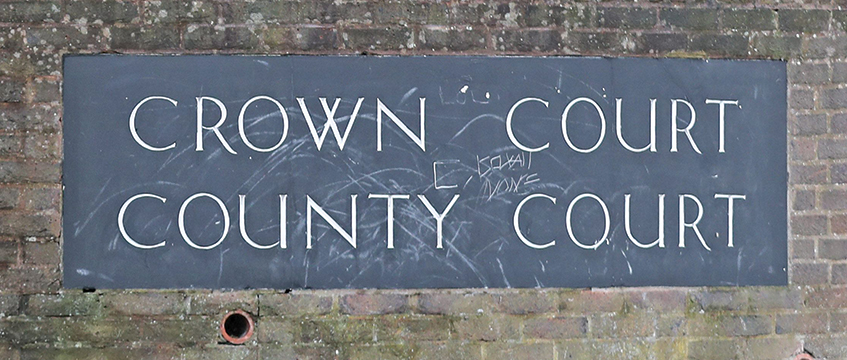The County Court in England and Wales handles thousands of real estate cases every year, but quality of service is in serious decline. Mathew Ditchburn highlights industry concerns.
In 2015 the Property Litigation Association (PLA), which represents specialist property litigation solicitors from across the UK, surveyed its members on their experience of using the County Court. The results supported anecdotal evidence about how bad court administration had become, with 88% considering that it was not fit for purpose and 91% saying clients had expressed concerns about litigating in the County Court at all.
Five years later, the PLA has repeated the survey and published a new report to see what, if any, improvements have been made. Sadly, matters appear to have gone into reverse, with 93% now saying the County Court falls below a workable standard.
The County Court of England and Wales
Most civil cases in England and Wales take place in the County Court, with more complex and higher value cases typically appearing in the High Court. Before the Crime and Courts Act 2013 came into effect in April 2014, there were more than 170 separate County Courts, each with its own administration and local jurisdiction. Since then, there has been a single civil court known as the County Court, although it remains spread across different regional buildings and courtrooms.
Many commonly occurring types of real estate cases are required to be dealt with by the County Court, including business lease renewals, possession claims and Housing Act proceedings. Quality of service is, therefore, of special interest to property litigators and the clients they represent.
Her Majesty’s Courts and Tribunal Service (HMCTS) is the government agency responsible for County Court administration. In 2015, its budget was slashed by 22%, or more than £200m. While funding has since recovered to pre-2015 levels, perhaps unsurprisingly the number of complaints lodged against HMCTS has risen year on year.
In 2016, HMCTS established a six-year, £1.2bn reform programme to modernise and upgrade the court system. Its stated aims were to introduce modern technology with online access to justice and new digital systems for administering courts; fewer, better and more modern court buildings; and fewer but better trained staff working in courts and newly established national call centres.
While the changes planned by HMCTS are on a scale never before attempted, it is axiomatic that the court system needs to keep functioning in the meantime. So far, court users have probably seen more of the downside than the benefits, with a third of court buildings being closed and sold off in the past nine years.
The PLA’s 2020 report
Of those who responded to the PLA’s latest survey, 91% considered County Court administration to be no better than poor, worsening by 7% since 2015. Almost all participants said that it was not fit for purpose.
When asked to specify what areas needed to improve, the themes emerging echoed many of those in the report five years ago: the inordinate time taken to process correspondence and court documents; the failure to answer telephone calls; unhelpful and poorly trained staff; the lack of consistent or accurate information about the status of claims; files getting lost; and hearings being cancelled at the last minute.
Respondents told of the “appalling” service they received, with “unhelpful and surly” staff and “huge delays and costs frequently wasted with no recourse for clients who often end up inconvenienced and paying for court errors”. Some reported orders not being typed up and sent out to the parties until after the time stipulated for compliance had already passed. Others described the number of errors in court documents as “shocking”.
A persistent bone of contention is that the majority of County Court centres no longer provide a counter service, save by prior appointment in urgent cases. It is, therefore, impossible to know whether a claim has been issued and served; parties can wait several months to find out.
Despite all this, 86% thought that there was no point complaining and 82% admitted advising their clients not to bother (compared with 82% and 71% in 2015). Nearly 80% were put off complaining because this would involve yet further cost that their client would be unable to recover. According to HMCTS’ own guidance, most complaints should be resolved within 10 working days. However, the survey results suggest that only 6% are resolved within this timescale, and 25% took more than 30 days to resolve.
Some 93% of respondents said that their clients had expressed concerns about using the County Court; one spoke of clients living in fear of being struck out while waiting for the court to deal with an application to extend time for compliance with a court order. Another said a client had described the situation as “third world”.
Fixing the problem
When asked what changes PLA members would recommend to improve the County Court system, reinstating counter services came top of the list. Second was court staff answering telephones. National call centres should be scrapped – as they “often can do very little to help” and “just do not work” – and replaced with dedicated case managers. Thirdly, an effective system was needed for managing documents, which the County Court seemed incapable of safeguarding, organising or retrieving.
The PLA’s report portrays a County Court failing some of its most regular customers. Its aim, however, is not merely to add to the weight of complaints but to highlight the issues and help HMCTS and those involved in running the courts make a case for urgent reform and better funding.
Mathew Ditchburn is chair of the PLA’s Law Reform Committee and a partner and head of real estate disputes at Hogan Lovells







